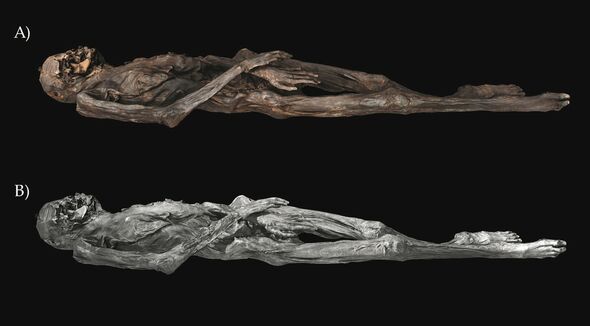A recent archaeological breakthrough is poised to revolutionize our understanding of ancient body art, with the discovery of remarkably preserved and intricately detailed tattoos on a 2,000-year-old ice mummy. This fascinating find challenges conventional historical narratives surrounding the prevalence and sophistication of tattooing in prehistoric societies, suggesting a level of artistic mastery previously underestimated.
The centerpiece of this revelation is a mummified individual from the ancient Pazyryk culture, a nomadic Iron Age people who inhabited the Altai Mountains of Siberia. Unlike typical archaeological remains where skin and its delicate adornments rarely survive, the unique deep-freeze conditions of these Siberian ‘ice mummies’ have provided an unparalleled window into an otherwise lost aspect of human cultural expression.
To meticulously examine these ancient tattoos, an international team of archaeologists employed cutting-edge high-resolution digital imaging techniques. This advanced digital imaging process allowed researchers to create a sub-millimeter resolution 3-D scan of the tattooed Pazyryk mummy, unveiling details invisible to the naked eye and enabling a comprehensive analysis of the designs and application methods.
What astonished the scientists most was the extraordinary intricacy and artistic quality of the ancient tattoos. Far from simple markings, these designs exhibit a level of detail and execution that contemporary tattoo artists would commend, showcasing sophisticated techniques and a profound artistic sensibility among these ancient people.
The Pazyryk culture, known for its distinctive material culture and burial practices, offers crucial context for this discovery. As Iron Age pastoralists, their lifestyle and beliefs likely influenced the iconography and placement of their body art, making the ice mummy a rare and invaluable artifact for anthropological study.
A particularly innovative aspect of the research involved collaboration with modern tattooers. By working closely with present-day ink artists, the archaeologists gained deeper insights into the technical aspects of the ancient designs, identifying the specific tools and methods that might have been employed to create such lasting and detailed body modifications.
Further examination revealed intriguing variations in the ice mummy’s body art; specifically, the tattoos on the right forearm demonstrated greater technical complexity and detail compared to those on the left. This observation leads to compelling speculation, suggesting the possibility of different tattooers contributing to the individual’s body art, or perhaps even reflecting distinct stages in a single artist’s development over time.
Ultimately, this groundbreaking archaeology discovery not only provides tangible evidence of widespread and highly developed tattooing practices in prehistory but also offers profound insights into the artistic capabilities, social structures, and cultural significance of body adornment in ancient human societies, truly rewriting a chapter of human history.






Leave a Reply